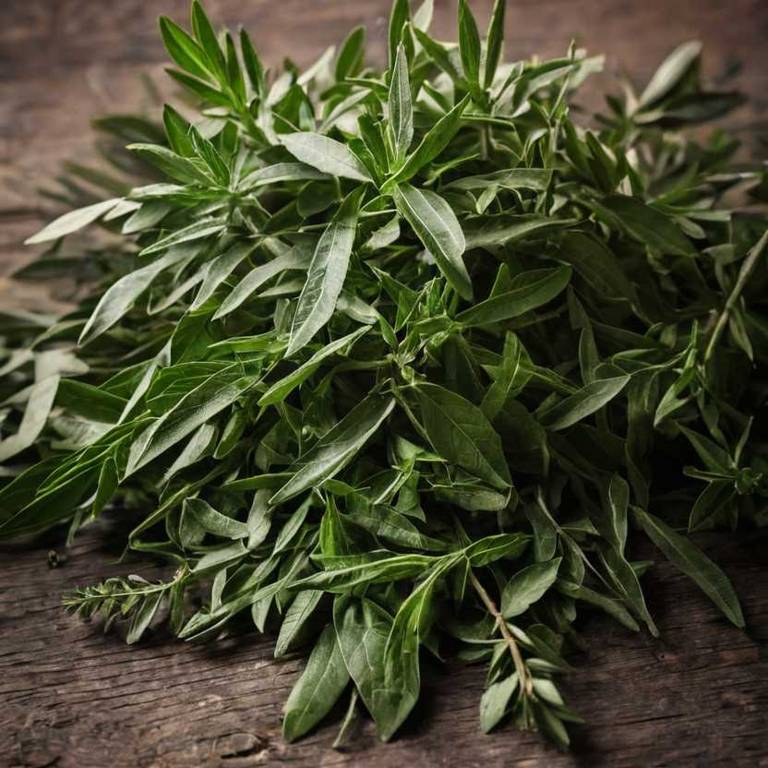10 Best Laurus Nobilis Preparations

The best medicinal preparations of Laurus nobilis are teas, decoctions, tinctures, essential oils, and syrups, each offering unique therapeutic benefits.
Teas made from dried leaves are commonly used to aid digestion and relieve nausea.
Decoctions, which involve boiling the leaves, are often employed for their warming properties and to extract more potent compounds.
Tinctures provide a concentrated form of the herb, useful for addressing respiratory or digestive ailments.
Essential oils derived from Laurus nobilis are valued for their aromatic and antimicrobial properties, often used in aromatherapy and topical applications.
Syrups made from the herb are traditionally used to soothe coughs and support respiratory health.
Below there's a list of the 10 best herbal preparations of laurus nobilis for medicinal purposes.
1. Teas
Laurus nobilis teas is commonly used to support digestive health, relieve stress, and promote relaxation.
It is often used to treat ailments such as indigestion, nausea, and gastrointestinal discomfort. The tea is also believed to aid in reducing inflammation and improving mental clarity. The bioactive constituents responsible for these effects include compounds like eucalyptol, linalool, and flavonoids, which have antioxidant and anti-inflammatory properties.
Additionally, the presence of essential oils contributes to its calming and soothing effects on the body.

2. Decoctions
Laurus nobilis decoctions is commonly used to treat digestive issues, respiratory infections, and as a general tonic to improve overall health.
These decoctions are often employed to alleviate symptoms of indigestion, nausea, and gastrointestinal discomfort. They are also used to relieve coughs, colds, and bronchial congestion due to their expectorant properties. The bioactive constituents responsible for these effects include eugenol, cineole, and various flavonoids, which possess antimicrobial, anti-inflammatory, and antioxidant properties.
Additionally, the decoctions may help in reducing stress and promoting mental clarity.

3. Tinctures
Laurus nobilis tinctures is commonly used to treat digestive issues, respiratory infections, and as a general tonic to improve overall health.
These tinctures are often employed for ailments such as indigestion, nausea, coughs, and headaches due to their soothing and antimicrobial properties. The bioactive constituents responsible for these effects include essential oils like eucalyptol and limonene, as well as compounds such as cineole and flavonoids. These components contribute to the tinctures' ability to reduce inflammation, fight infections, and support digestive function.
Additionally, they may help alleviate stress and promote mental clarity.

5. Syrups
Laurus nobilis syrups is commonly used to treat respiratory infections, digestive issues, and as a general tonic to improve overall health.
These syrups are often employed to alleviate symptoms of coughs, bronchitis, and sore throats due to their expectorant and antiseptic properties. They are also used to aid digestion and relieve nausea, making them popular in traditional medicine. The bioactive constituents responsible for these effects include essential oils such as eucalyptol and limonene, as well as compounds like cineole and flavonoids.
These components contribute to the plant's antimicrobial, anti-inflammatory, and digestive-stimulating properties.

6. Capsules
Laurus nobilis capsules is commonly used to support digestive health, alleviate nausea, and reduce inflammation.
They are often employed in the treatment of indigestion, bloating, and gastrointestinal discomfort. Additionally, they may help in managing symptoms of the common cold and respiratory infections. The bioactive constituents include essential oils such as eucalyptol and limonene, as well as compounds like flavonoids and phenolic acids, which contribute to their antimicrobial and anti-inflammatory properties.
These components work synergistically to provide the plant's therapeutic effects.

7. Oils
Laurus nobilis oils is commonly used to treat digestive issues, respiratory infections, and muscle pain.
It is often applied in aromatherapy to relieve stress and improve mood. The oil is also used in topical applications for its antiseptic and anti-inflammatory properties. Common ailments treated with this preparation include nausea, coughs, and skin infections.
The bioactive constituents responsible for its medicinal effects include eucalyptol, limonene, and cineole, which possess antimicrobial, analgesic, and antioxidant properties.

8. Creams
Laurus nobilis creams is commonly used to relieve muscle pain, joint inflammation, and skin irritations due to their soothing and anti-inflammatory properties.
These creams are often applied topically to treat conditions such as arthritis, rheumatism, and minor burns. The medicinal effects of Laurus nobilis are attributed to its bioactive constituents, including essential oils like eucalyptol and limonene, as well as compounds like flavonoids and phenolic acids. These compounds possess antioxidant, antimicrobial, and analgesic properties that contribute to the therapeutic benefits of the cream.
Additionally, the aromatic compounds in the cream may help in reducing stress and promoting relaxation when used in aromatherapy.

9. Linctuses
Laurus nobilis linctuses is commonly used to relieve respiratory conditions such as coughs, bronchitis, and sore throats.
This herbal preparation is particularly effective in loosening mucus and reducing irritation in the respiratory tract. It is often recommended for its soothing effects on the throat and its ability to ease breathing. The most common medicinal uses include treating coughs, colds, and inflammatory respiratory diseases.
The bioactive constituents responsible for its medicinal properties include essential oils like eucalyptol, cineole, and limonene, which have expectorant, antiseptic, and anti-inflammatory effects.

10. Lozenges
Laurus nobilis lozenges is commonly used to alleviate symptoms of respiratory tract infections, sore throat, and cough.
These lozenges are often employed to treat ailments such as bronchitis, laryngitis, and other inflammatory conditions of the upper respiratory system. The bioactive constituents responsible for their medicinal properties include eucalyptol, cineole, and other volatile oils that possess antimicrobial, anti-inflammatory, and expectorant effects. Additionally, the presence of flavonoids and phenolic compounds contributes to their soothing and healing actions.
These lozenges are valued for their ability to provide relief and support the body’s natural defenses against infections.
